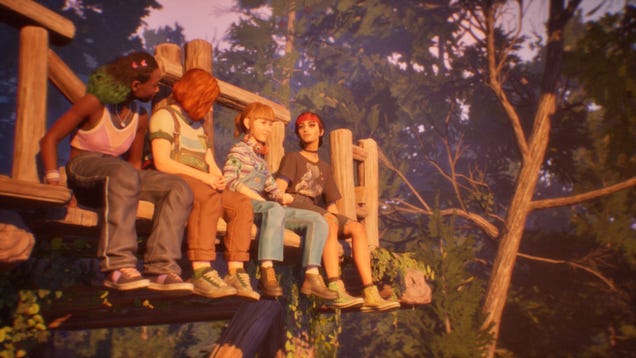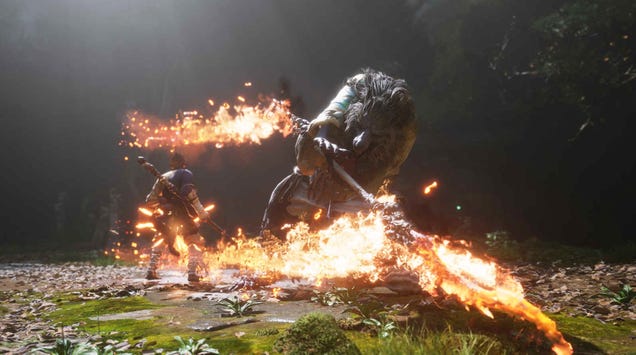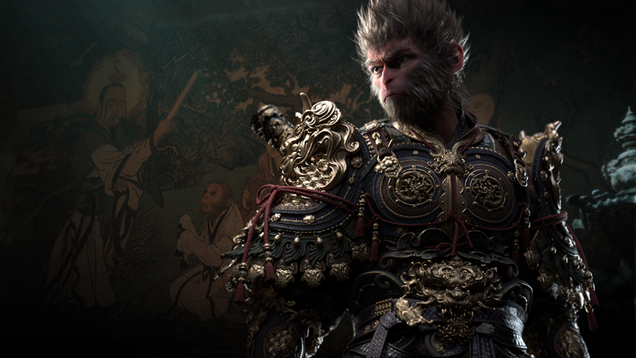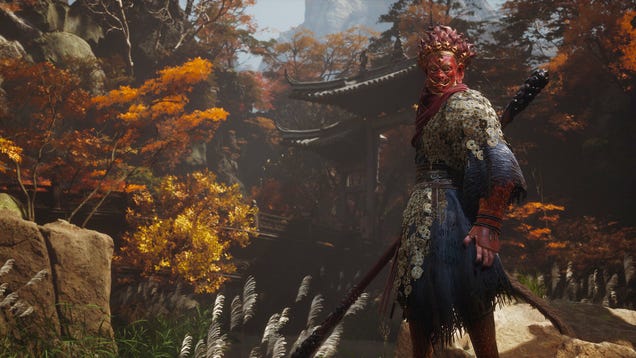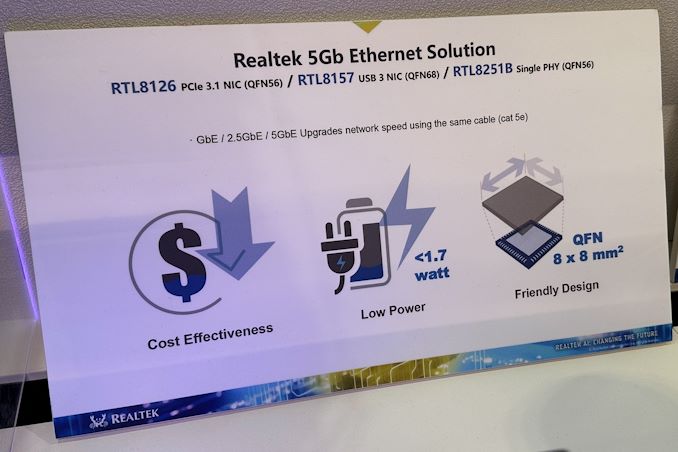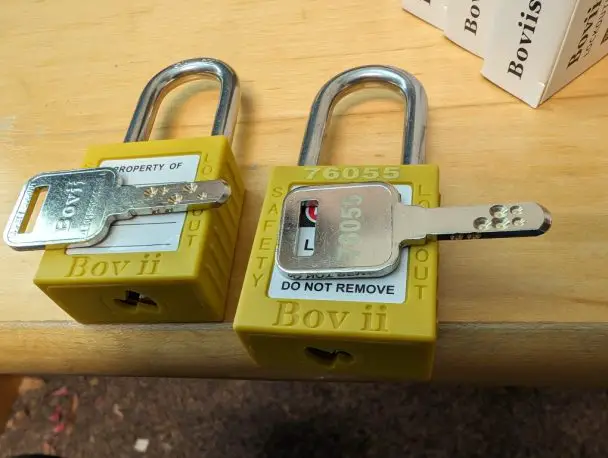President Biden launched an attack on the independence of the federal judiciary on July 29th when he endorsed the packing of the U.S. Supreme Court. He did this in an op-ed in the Washington Post and then in a partisan speech that same day commemorating the 60th anniversary of the passage of the Civil Rights Act of 1964. His Vice President, Kamala Harris, endorsed Biden's comments and indicated that she would be more aggressive on this issue than Biden has been. Packing the Supreme Court is thus a key issue in the 2024 presidential and senatorial elections, as GOP Senate candidates running in red or purple states like Montana, Ohio, Pennsylvania, Wisconsin, Michigan, Nevada, and Arizona should make clear.
Technically, Biden and Harris are probably calling for a statute that would unconstitutionally limit the voting rights of Supreme Court justices to 18-year terms in violation of Article III of the Constitution. I base this inference on my knowledge of the proceedings of President Biden's Supreme Court Reform Commission, since Biden's July 29th op-ed and speech provided no specifics. The Biden-Harris proposal of July 29th reflects the fact that a solid majority of voters oppose court packing, but voters like the idea of Supreme Court term limits by a large margin. Term limits on Supreme Court justices could be legally imposed by constitutional amendment, which would require a bipartisan consensus, and, if the term limit were long enough, it might be somewhat reconcilable with judicial independence. In reality, the Biden-Harris proposal is both a disguised court packing plan, which voters rightly oppose, and it is also unconstitutional and the greatest threat to judicial independence since President Franklin D. Roosevelt tried unsuccessfully, in 1937, to increase the size of the Supreme Court from 9 to 15 justices.
Biden tipped his hand that he is asking for a statute imposing an 18-year term limit on the voting rights of Supreme Court justices in cases or controversies before the Supreme Court because, in his July 29th proposal, he called for a constitutional amendment to overturn a recent Supreme Court case that he disagreed with, but he pointedly did not call for a constitutional amendment to enact an 18-year term limit on Supreme Court justices' voting rights on cases before the Supreme Court. Biden also did not specify whether such a package would apply retroactively to the nine current Supreme Court justices or prospectively, as some members of his Presidential Commission on Supreme Court reform have suggested it should. President Biden, and some members of his Commission, seem to think that the mere passage of a statute and not a constitutional amendment is all that is needed to eliminate the voting rights of Supreme Court justices once they have served for 18 years. I am not aware of any Republican member of Biden's Commission or of any right of center legal scholar or lawyer who currently thinks that what Biden-Harris are contemplating is constitutional.
How would the Biden-Harris plan work in practice if the Democrats win the 2024 election this November 5th? Imagine that sometime after noon on January 20, 2025, Senate Democrats, if they are still in the majority, eliminate the filibuster for a Supreme Court packing effort, disguised as an 18-year term limits bill on voting rights of Supreme Court justices on cases or controversies before the Supreme Court, which requires 60 votes to end debate. Then imagine that Kamala Harris has been elected president, that the Senate has ended up tied 50 to 50 as happened four years ago in the election of 2020, and that Kamala Harris's Vice President holds the tie breaking vote, enabling Supreme Court packing to pass in the Senate by a partisan vote of 51 to 50. Finally, imagine that Democrats win a slim majority in the House of Representatives. The Biden-Harris court packing statute, disguised as an unconstitutional 18-year statutory term limit on Supreme Court justices voting power would become a law awaiting judicial review as to its constitutionality.
All of this could easily happen, and with the retirement of Senators Joe Manchin and Kyrsten Sinema there are probably no Democrats left in the Senate who would oppose the abolition of the filibuster if it stood in the way of enacting such a statute. Based on their voting records between 2021 and 2023, when the Senate was last evenly divided, and fresh off a successful 2024 reelection campaign, Montana Senator Jon Tester, Ohio Senator Sherrod Brown, Pennsylvania Senator Bob Casey, Wisconsin Senator Tammy Baldwin, and Nevada Senator Jacky Rosen would be highly likely to join the rest of their party. If red-state Senate Democrats do not intend to join the Biden-Harris court packing bandwagon, they should publicly and loudly denounce the Biden-Harris court packing plan right now, before the November 5th election, and commit to voting against it.
Although the details remain to be spelled out, the immediate effect of an unconstitutional retroactive court packing law, disguised as a term limits law, would be to remove as voting members of the Supreme Court, on cases before that Court, three out of the six of the moderate, libertarian, and conservative Republican-appointed current life-tenured Supreme Court Justices who have served for more than eighteen years: Chief Justice John Roberts and Justices Clarence Thomas and Samuel Alito. Strikingly, no progressive or Democratic-appointed Justices would be removed. Such a law would then allow President Harris and a Democratic Senate to appoint three new progressive justices—one for each of the removed justices who have served for longer than 18 years. The number of justices would also technically increase from 9 to 12, although the 3 term-limited Justices would no longer have a vote on cases before the Supreme Court. This combination is what makes the Biden-Harris proposal, if retroactive, a court packing plan and not a term limits plan.
To be sure, the new progressive justices, in turn, would be unconstitutionally term limited to 18 years. But this would be a long time far into the future—in 2042. Meanwhile, the law would immediately remake the voting membership of the Supreme Court from a 6 to 3 moderate, libertarian, and conservative Republican-appointed majority, into a Supreme Court with a 6 to 3 Progressive Democratic-appointed majority, and three Republican-appointed members without a vote on cases before the Supreme Court: Chief Justice John Roberts and Justices Clarence Thomas and Samuel Alito. President Harris's court packing bill, if it applied retroactively, would change the Supreme Court from a 6 to 3 majority of voting moderate, libertarian, and conservative Republican-appointed Justices to a 6 to 3 majority of voting progressive Democratic-appointed Justices through her new appointees. Thus, a retroactive court packing statute, disguised as an 18-year term limit on Supreme Court justices, would unconstitutionally give Democrats a 6 to 3 voting majority on the Supreme Court perhaps until 2042.
A prospective court packing law that simply added three new 18-year term limited justices, for each justice who has served more than 18 years, would lead to a 12-member Supreme Court that is tied 6 to 6. Either way, the statute Biden and Harris have in mind is a court packing law and not an 18-year term limits law. I am basing my discussion of what Biden and Harris may have in mind on conversations with key members of President Biden's Supreme Court Reform Commission, a number of whom are close personal friends. Either way, whether it is retroactive or not, the term limits statute the Biden Commission on Supreme Court Reform proposal favored, which never made its way into the public eye, is unconstitutional. Perhaps President Biden meant to put forward this proposal in his second term, which he will no longer serve due to his withdrawal as a candidate for President in 2024.
This proposed Biden-Harris "term limits" / court packing plan described above is the greatest threat to judicial independence since President Franklin D. Roosevelt tried unsuccessfully to pack the Supreme Court in 1937. His proposal would have increased the number of justices from 9 to 15—6 justices for each of the then-9 justices who were over the age of 70. The Court's membership has been fixed at 9 justices since 1869—a period of 155 years. Other than FDR's unsuccessful 1937 court packing plan, and some short-term court packing during the immense crisis of the Civil War, no Supreme Court packing law has ever passed in 235 years of American history. The size of the Supreme Court did increase from 6 justices at the founding, to 7 and then 9, before 1861, as the population and number of states in the union increased exponentially. None of those increases were motivated by a desire to pack the Supreme Court outright, as is explained in Joshua Braver, Court Packing: An American Tradition?, 61 Boston College Law Review 2747 (2020). While I think that what FDR tried to do in 1937 was also unconstitutional, I will confine my comments today to addressing the constitutionality of what I know to be the plan for statutory court-packing as term limits on justices' voting, which the Biden Commission on Supreme Court Reform considered.
The present nine life-tenured justices would be duty-bound to hold statutory term limits schemes, whether retroactive or prospective, unconstitutional. The term of office and powers, including the power of voting on cases before the Supreme Court, of life tenured Supreme Court can no more be altered by statute than can be the term of office or powers of the President, the Vice President, Senators, or Representatives, or of any state elected officials. Congress could not by statute take away the Vice President's tie breaking vote when the Senate is equally divided. Biden and Harris, of all people, should understand that, having served both as Vice Presidents and Senators.
The insurmountable constitutional and legal problem with President Biden's Supreme Court term limits statute in any form is that Article III, Section 1 of the Constitution says explicitly that:
"The judges, both of the supreme and inferior courts, shall hold their offices during good behaviour …." This clause, on its face, renders any term limits, retroactive or prospective, on the Supreme Court judges unconstitutional. Such term limits cannot be achieved by the subterfuge of eliminating voting rights on cases of Supreme Court justices but not the justices' title, for reasons implicit in U.S. Term Limits Inc. v. Thornton, 514 U.S. 779 (1995) (limit on eligibility to be on the ballot is a subterfuge for an unconstitutional term limit).
Since 1761, British law has defined "good behaviour" to mean life tenure absent conviction of a felony. The Framers of the U.S. Constitution clearly understood it to mean at least that too, with a felony on its own probably insufficient absent a special impeachment and conviction proceeding in addition. That is also how tenure during good behavior has been widely understood by Americans, including American Presidents, from 1789 until President Biden's speech on July 29, 2024.
The only clause in the Constitution that even comes close to empowering Congress to legislate as to the Supreme Court reads as follows in relevant part (emphasis added):
The Congress shall have Power … To make all Laws which shall be necessary and proper for carrying into Execution … all other Powers vested by this Constitution in the Government of the United States, or in any Department or Officer thereof.
Congress thus does have the power to make "necessary and proper laws for carrying into execution" the judicial power of the life tenured justices and judges. Congressional power over the judiciary under this Clause has, however, been construed to be limited by the critical principle of judicial independence, which is the right way in which to construe it. See Plaut v. Spendthrift Farm Inc., 514 U.S. 211 (1995) (opinion of the court by Scalia, J). I think, as Plaut ruled, that the Necessary and Proper Clause does not allow the Congress to retroactively require courts to effectively reverse themselves on previously adjudicated cases, which is merely an implication of the principle of judicial independence. Much less does it allow Congress to effectively nullify Supreme Court Justices' life tenure by curtailing the justices' voting rights on cases before the Supreme Court after 18 years when the President and Congress are "displeased" with the Court's decisions.
Some too-clever-by-half law professors (to some extent including me, 22 years ago) have claimed that proposals of the type considered by the Biden Supreme Court Reform Commission are not really an attack on the Justices' life-tenure. They argue that from 1789 to 2024, Supreme Court justices have held two federal, judicial offices: the first deciding cases that come before the Supreme Court, and the second riding circuit or hearing cases on the lower federal courts. Congress first curtailed and then eliminated circuit riding in the Nineteenth Century at the request of the Supreme Court justices themselves when it created many lower federal court judgeships. But, even today, Supreme Court justices are also circuit justices who hear requests for stays from their home circuits. They can also decide federal court of appeals or district court cases in any circuit when they are designated to do so by a lower federal court chief judge.
Yet the abolition of circuit riding was constitutional for the same reason the Supreme Court upheld the abolition of 16 federal court of appeals judgeships created by the lame duck John Adams Administration and a lame duck Federalist Congress in February of 1801. See Stuart v. Laird, 5 U.S. (1 Cranch) 299 (1803). Congress can abolish a level of inferior court judgeships, the inferior judges of which have tenure during "good behaviour," and it can stop Supreme Court justices from hearing cases on inferior courts, but it cannot redefine "good behaviour" to constitute voting rights on the Supreme Court for only the first 18 years of a Supreme Court justice's service.
The law professor proponents of statutory term limits claim that Congress could retroactively redefine the office of Supreme Court judge to clarify that justices vote only on Supreme Court cases for the first eighteen years after their appointment as Supreme Court judges, and then for the rest of their lives they have tenure during good behavior as circuit court judges who still have the title of Supreme Court judge but not the power to vote on cases before the Supreme Court. But this position is in my now considered judgment a mistaken view. I have changed my mind on this in the last 22 years, as I will explain further below. Everyone has long understood that the primary responsibility of the "office" of Supreme Court Justice is to serve as the final arbiter who votes in cases or controversies properly before the Supreme Court.
Moreover, the office of "judge of the supreme court," unlike the office of circuit judge, which Congress created by statute in 1789, is one of the very few offices created by the Constitution, itself, and not by a federal statute. This is made clear by its mention in the Appointments Clause, which explicitly says that: "[The President] shall nominate, and by and with the Advice and Consent of the Senate, shall appoint Ambassadors, other public Ministers and Consuls, Judges of the supreme Court, and all other Officers of the United States, whose Appointments are not herein otherwise provided for, and which shall be established by Law."
Congress has no power by statute to alter this constitutionally created and tenured office or its powers, an office and powers that are currently held by nine life-tenured men and women. In this office, which the Constitution itself creates, those nine Justices have the duty (in Latin, officium, from which the English word "officer" is derived) to vote on all cases or controversies before the Supreme Court. Similarly, Congress cannot alter the terms of offices, or the powers of those who hold such offices, as the Members of the House of Representatives, the Members of the Senate, the President, the Vice President, presidential electors, the Chief Justice of the United States, and ambassadors and other public ministers and consuls. The Supreme Court has also correctly rejected efforts by State legislatures to impose term limits on members of Congress notwithstanding the state legislatures' express and residual authorities to regulate elections and ballot access under the Tenth Amendment. See U.S. Term Limits, Inc. v. Thornton, 514 U.S. 779 (1995).
All offices of the United States other than the ones noted above (except for the Speaker of the House of Representatives and the President Pro Tempore of the Senate) are created by Congress by statute and can be term limited by Congress; but that's not so for any "supreme or inferior" federal court judgeships. Congress can no more change the term of the "office" or the voting rights of Supreme Court justices or "Judges" by statute than it can do so as to the term of office or the powers of the President, the Vice President, Senators, or Representatives. Nor can the states change the term of office of any federal officials by, for example, effectively imposing term limits on their federal Senators and Representatives. See U.S. Term Limits.
The American people adopted the Twenty-Second Amendment to limit U.S. presidents to no more than two elected terms or a total of ten years in office. This was an exceptionally wise and bold move, which exempted from the two-term limit the then-serving President, Harry S. Truman. Just as it was necessary to pass a constitutional amendment to limit presidents to two terms prospectively, it is also necessary to pass a constitutional amendment to term limit or change the voting powers of Supreme Court justices, and a constitutional amendment would also be necessary to change the term of office or powers of the Vice President, or of Senators or of Representatives. No-one thought, in 1947, that Congress could by statute pass as "necessary and proper" a law that carried into execution the President's "four-year term of office" by adding the limit that he could serve for only two four-year terms. The Framers of the Constitution considered these sorts of ideas and rejected them out of hand, as the words of the Constitution show. Nor did anyone think that such a statute could have left Franklin D. Roosevelt with the title, but not the powers, of the presidency, when he began his third term as President in 1941, while some other individual also called the President somehow had all the powers that belonged to FDR under the Constitution.
The Biden-Harris plan is thus unconstitutional and should not be taken seriously by anyone. And it is also bad public policy for at least five reasons.
First, it would in practice be the end of judicial independence, which has been essential to the rule of law and the endurance of the American experiment. Instead, it would hopelessly politicize the Court, both immediately and in the long term. The new Court majority would owe their jobs to the current President and Congress far more directly than the does the current majority of Supreme Court justices. The next time Republicans win the presidency and simple majorities in both Houses of Congress, they would simply repack the Supreme Court themselves.
Such a move by Biden and Harris, with the certainty of a tit for tat by Republicans, is a great threat to our constitutional republic. What the Democrats do without bipartisan support in 2025, the Republicans will certainly do again without bipartisan support whenever they get a trifecta. It is no exaggeration to say that in short order this would end the 235-year American experiment with constitutional democracy.
A second policy problem, considered by Biden's Supreme Court Reform Commission, is that when that plan is fully implemented, it would provide that one of the nine seats on the Supreme Court would open every two years over an eighteen-year cycle. This would give every two-term president four seats to fill, which is almost always enough to tip the balance on the Supreme Court. As of 2024, we have had fifteen presidents who have served eight or almost eight years in office. They include George Washington, Thomas Jefferson, James Madison, James Monroe, Andrew Jackson, Ulysses S. Grant, Grover Cleveland, Theodore Roosevelt, Woodrow Wilson, Franklin D. Roosevelt, Harry S. Truman, Dwight Eisenhower, Ronald Reagan, Bill Clinton, and Barack Obama.
What would it be like to live in a country which has had fifteen major shifts in constitutional caselaw instead of, or possibly in addition to, the perhaps five or six major shifts in caselaw that our life tenured Supreme Court has produced? The Supreme Court would become much like the National Labor Relations Board, which is quickly dominated by labor unions during Democratic Administrations and by the Chamber of Commerce during Republican Administrations. So much for the rule of law and the Constitution. What is next? Abolishing the fifty states or the Senate by statute?
A third policy problem that bears noting is that the Biden-Harris term limit of 18 years would have cut short the tenure of many Justices long admired by Progressives, among others Thurgood Marshall, Louis Brandeis, Joseph Story, William J. Brennan, Jr., John Marshall Harlan the elder, Oliver Wendell Holmes, Hugo Black, John Marshall, and John Paul Stevens.
Do Biden-Harris, and Democratic Senate candidates in red states like Montana and Ohio, really want to cut short the judicial careers of all people like this? After all, many Supreme Court justices are said by progressives to "grow in office." That would happen to a much lesser degree with a statutory term limit of 18 years on the service of Supreme Court justices.
A fourth policy problem with the Biden-Harris plan is that twice in American history when one party controlled the presidency, the Congress, and the Supreme Court the results were catastrophic. In 1944, when New Deal Democrats controlled the presidency, Congress, and the Supreme Court, they abused their power in Korematsu v. United States, 323 U.S. 214 (1944). Six of the eight Democratic appointees on the Supreme Court voted to let President Franklin D. Roosevelt send 100,000 Japanese American citizens to concentration camps solely because of their race.
An earlier abuse of power occurred in the late 1790's when the Federalist Party controlled the presidency, the Congress, and all the federal courts. Between 1798 and 1801, Federalist Party justices and judges appointed by Federalist Party Presidents, George Washington and John Adams, used the Sedition Act of 1798 passed by a Federalist Party Congress to jail Democrats for, among other things, calling President Adams "pompous," "foolish," "silly," and a "bully." The courts jailed and fined citizens and even a congressman from Vermont, even though the speech in question was clearly constitutionally protected under the First Amendment.
The fifth and final public policy problem is that in arguing for an 18-year term limit for U.S. Supreme Court justices, President Biden gives great weight to the fact that other constitutional democracies have term limits or mandatory retirement ages on their "equivalents" to our Supreme Court justices. Biden misses, however, the fact that the United States differs greatly from all of those other much less free, much less wealthy, and much less populous constitutional democracies. From 1789 to the present, the United States has been "a shining city on a hill," which all of the other constitutional democracies formed since 1875 have strived imperfectly to emulate. Millions of Southern, Eastern, and Central Europeans; Arab and Sub-Saharan Africans; West, South, and East Asians; and Central and South Americans would all come to live in the United States, if they legally could do so, while virtually no Americans, including oppressed Black Americans, try to leave our country.
I suspect that judicial life tenure is one of the reasons why the United States is freer than any other constitutional democracy. I also suspect that the high level of certainty in U.S. law, especially Supreme Court caselaw, has reduced the risk factor in investment in the United States. This in turn explains why the United States has the highest GDP per capita of any of the G-20 nations, which are constitutional democracies.
Salman Rushdie could publish The Satanic Verses in the United States and be confident that he would not be prosecuted for doing so in 20 years. Sadly, this is not the case in Canada, Germany, France, Brazil, India, or many other constitutional democracies, in some of which, like India, I have been told by scholars that Rushdie's book is banned. Elon Musk can start SpaceX in the United States and be confident that it would not be nationalized with inadequate just compensation in twenty years. Sadly, this is not the case in many other constitutional democracies.
Our life tenured Supreme Court, and the certainty that it creates have played a central role in establishing the liberty and prosperity evidenced by our unequaled GDP per capita among the G-20 nations. I lay out the evidence for this claim in 700 pages in a two-volume recently published book series, The History and Growth of Judicial Review: The G-20 Common Law Countries and Israel (Oxford University Press 2021) and The History and Growth of Judicial Review: The G-20 Civil Law Countries (Oxford University Press 2021). The research I did for these two books caused me to rethink my earlier support, as a policy matter, for Supreme Court term limits of 18 years accomplished by constitutional amendment or statute. See Steven G. Calabresi & James Lindgren, Term Limits for the Supreme Court: Life Tenure Reconsidered, 29 Harv. J. of L. & Pub. Pol. 769 (2006), and a 2020 op-ed in The New York Times. I once in 2002 signed an op-ed with Professor Akhil Reed Amar endorsing statutory 18-year term limits, but I recanted that view in my 2006 law review article with Lindgren, writing that statutory term limits were unconstitutional and unwise.
The other constitutional democracies that have term limits or mandatory retirement ages on their Supreme Courts or Constitutional Courts—their equivalents to the U.S. Supreme Court when it comes to having the power of judicial review—all give much more power to those "courts" than the U.S. Constitution gives to the U.S. Supreme Court. All of these foreign "courts" have the power to issue advisory opinions; lack a strict standing doctrine, like the one set forth by the U.S. Supreme Court; or allow citizen/taxpayer standing, which is not allowed in the U.S. and which hugely broadens the range of issues which a Supreme Court or Constitutional Court can rule on. Several foreign Supreme or Constitutional Courts have the power to declare constitutional amendments unconstitutional. Several also allow their current justices or judges to select their successors without meaningful input from elected officials.
This medieval guild system of incumbent judges selecting their judicial successors resembles the medieval guild system of U.S. law schools where faculty members select their own successors, a job which faculties do not do very well. In contrast, U.S. Supreme Court justices are selected by democratically elected officials through presidential nomination and senatorial confirmation. This reduces the counter-majoritarian difficulty, which judicial review creates.
In short, the reason why so many foreign countries have term limits, or age limits, and the U.S. Supreme Court justices do not, is because the foreign equivalents to our Supreme Court justices are significantly less constrained in other ways. They are therefore more in need of additional constitutional restraint than is the U.S. Supreme Court because they are not really "courts" as Americans have always understood that word.
Court packing, or term limits, would sharply undermine the independence of our judiciary. It's unconstitutional, and it's bad policy. I hope that Senators of both parties speak out against it.
The post Biden-Harris on Supreme Court Term Limits appeared first on Reason.com.













